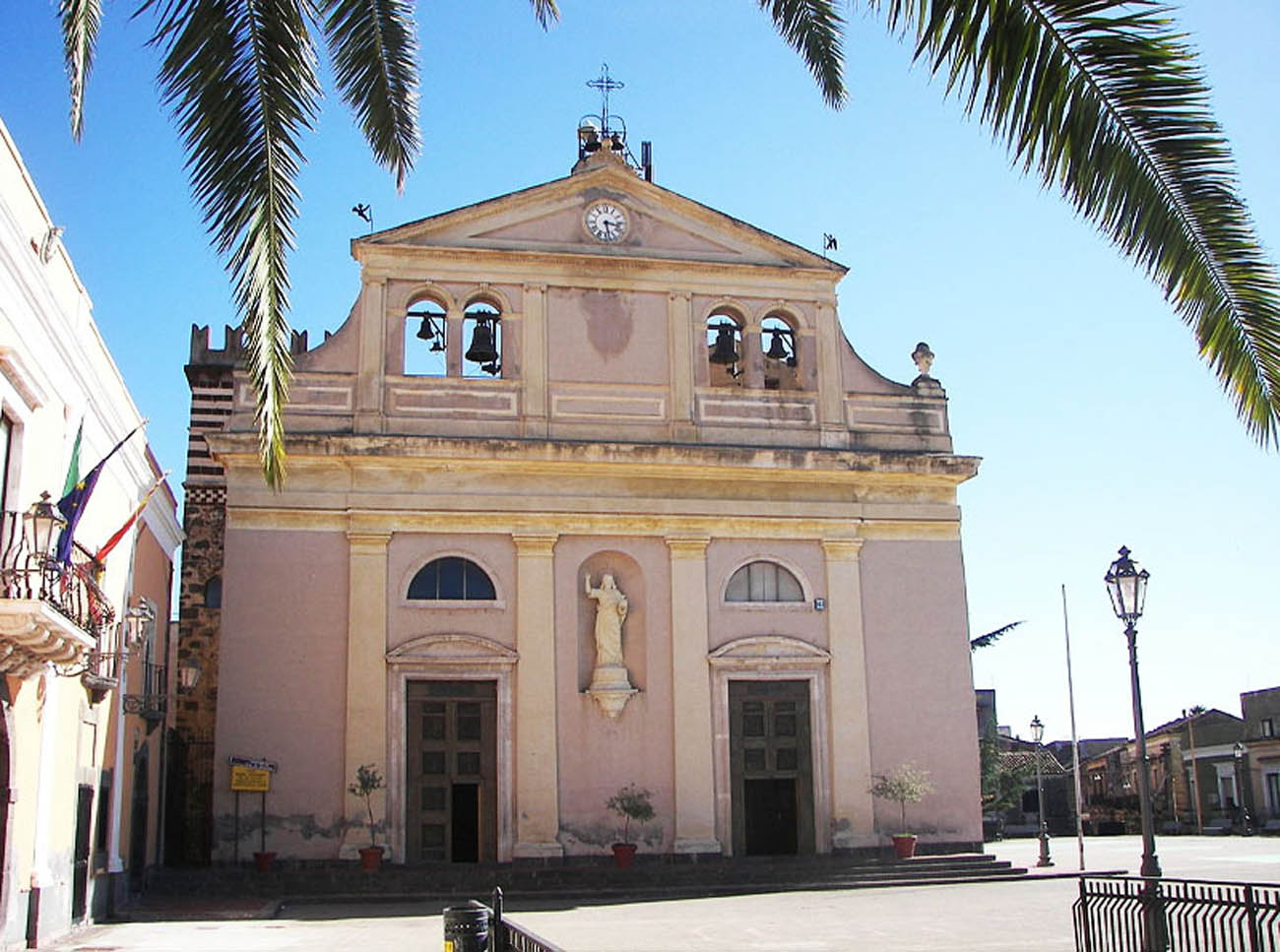
SANTA MARIA OF LICODIA: BETWEEN MEDIEVAL HISTORY AND LIBERTY STYLE
Santa Maria of Licodia is located in the province of Catania and it is one of the municipalities of the Etna Park. Located at 442 m.a.s.l. on the south-western side of Etna, it is surrounded by countryside where citrus fruits, olive groves and vineyards are grown.
The core would derive from the ancient city of Inessa, from the Sicani domination period (12th century BC). As for the etymology of the word “licodia”, it is thought to derive from the term ”wood”, linked to the wooded expanse of its territory.
The churches
Several churches were built in medieval times, up until the creation of the Monastero della Madre di Dio (Monastery of the Mother of God) in the Licodia district, hence the full name of the town.
- La Chiesa Madre (The Mother Church), dedicated to the SS. Crocifisso and of medieval origins, is undoubtedly noteworthy. It is thought that it was previously a Byzantine place of worship. Over the centuries, it underwent several changes: in 1344 it became a fortress Church, in 1743 the Church of SS. Crocifisso. Inside, there are the paintings “San Leone Taumaturgo che sconfigge il mago Eliodoro” (“San Leone the Wonderworker defeating the magician Eliodoro“) by Matteo Desiderato and “la Sacra Famiglia” (“the Holy Family”) by Giuseppe Rapisardi.
- La Chiesa della Madonna del Carmelo (The Church of the Madonna of Carmelo) is the second largest in the town in terms of size and importance. The external facade in lava stone was replaced in the 1960s by a modern one, characterized by a spire bell tower.
Inside there is a single nave where you can find Baroque-style stuccos and six altars. The fresco of the “Consegna dello Scapolare” (“Delivery of the Scapular”) on the vault of the Church is really interesting. - La Chiesa della Madonna della Consolazione (The Church of the Mother of Consolation) differs from the others for its original rustic structure in lava stone. After the damage suffered during the Second World War, worship was forbidden and subsequently, a new structure was erected which since 2002 has been reopened for worship.
- La Chiesa della Resurrezione (The Church of the Resurrection), on the other hand, is characterized by a harmonious facade with two ascending orders in Liberty style, by the licodiese Giuseppe Anile.
Interesting places
Among the monuments and places of interest in the town there are:
- the torre campanaria (bell tower), considered the glorious symbol of the town, whose style dates back to the transition from Romanesque to Gothic. The decorative effect of the upper loggia given by the contrast between the dark lava stone and the white limestone is remarkable.
- Palazzo Ardizzone (Ardizzone building), one of the oldest noble buildings in the city. It contains two courts: the main court is representative and includes the original and modern part, while the living area is characterized by delicate paintings and stuccoes that decorate the ceilings.
- The torre “di Calafato” (”di Calafato” tower) is an ancient rectangular building in lava stone that rises through steps. It was probably a Greek tomb or a structure designed to collect and arrange the stones that were removed from the ground.
- The pietra Pirciata (Pirciata stone) has at the top a wall with a hole which, according to the legend, was created by the Cyclops Carlapone.
- The villa comunale “Giardino Belvedere” (municipal villa “Giardino Belvedere”), has a large circular square at the entrance, on whose pavement there is the municipal coat of arms and the marble statue of the Venus Italica, a copy of the famous work by Antonio Canova.
Santa Maria of Licodia has an interesting Liberty heritage, visible above all in the palaces such as Palazzo La Rosa, Leonardi and Anile. The palaces were rebuilt between the mid-nineteenth and early twentieth centuries.
Traditions
Among the local festivities, Carnival is one of the ancient tradition that are celebrated: for three days the masked groups and allegorical floats parade and at the end of the parade there is the awarding of the masked groups and the most beautiful allegorical float. Another important festivity is that of the patron San Giuseppe (Saint Joseph) which is celebrated for a whole week, with a series of events organized in the town.


